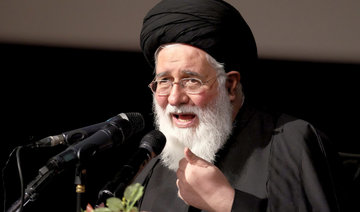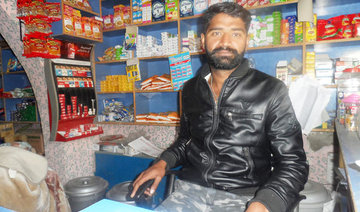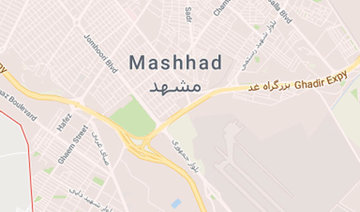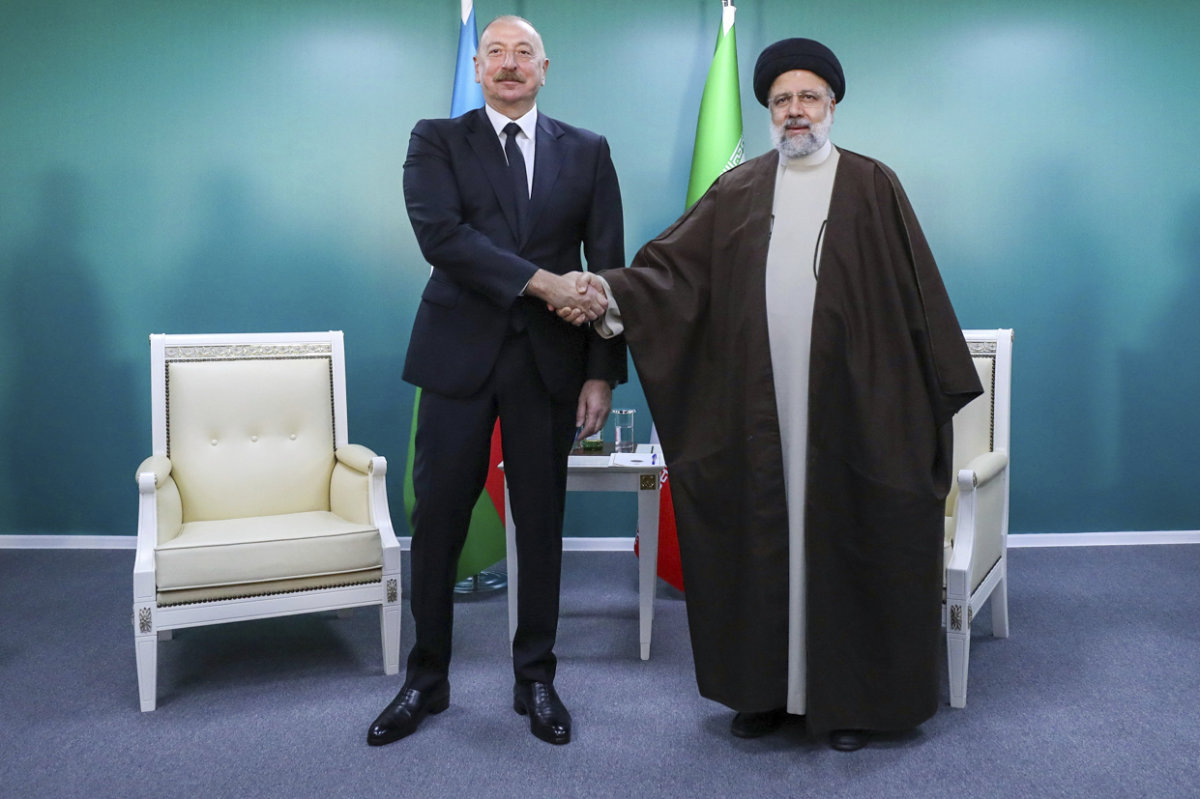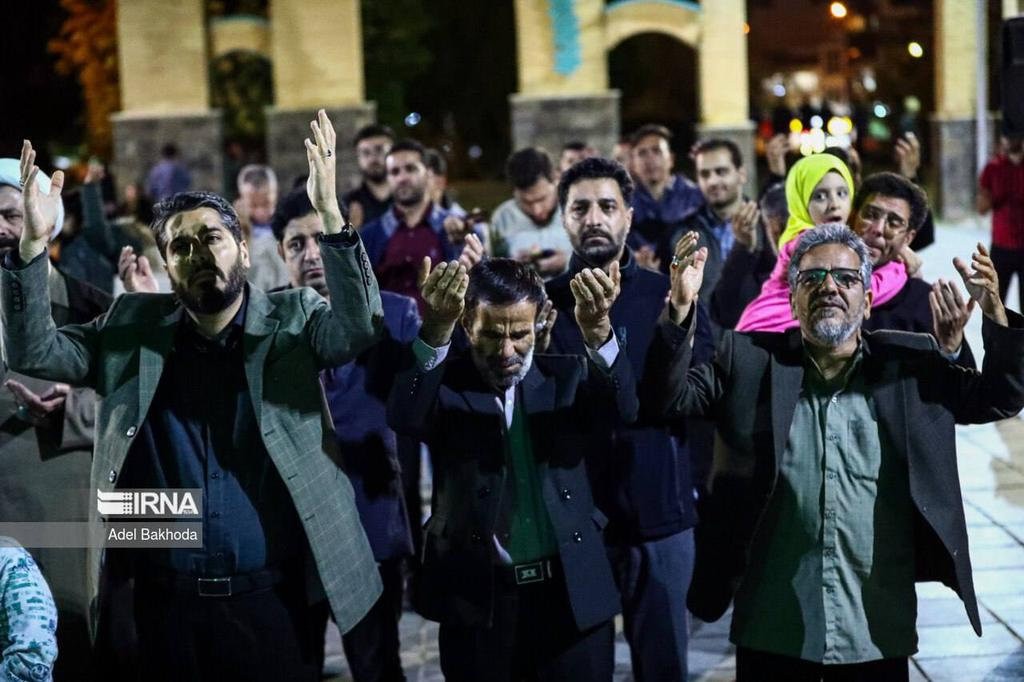DUBAI: Iranian police dispersed anti-government protesters in the western city of Kermanshah on Friday, the Fars semi-official news agency said, as protests spread to Tehran and apparently several other cities a day after rallies in the northeast.
The outbreak of regional unrest reflects growing discontent over rising prices and alleged corruption, as well as concern over Iran’s costly involvement in regional conflicts such as Syria and Iraq.
An official said a few protesters were arrested in Tehran, and videos posted on social media showed demonstrations in a number of the country’s leading cities, which if verified would be the largest wave of protests in Iran since 2009.
Footage posted on social media showed a heavy police presence in Tehran and some other cities.
About 300 demonstrators gathered in Kermanshah after what Fars called a “call by the anti-revolution” and shouted “Political prisoners should be freed” and “Freedom or death,” while destroying some public property. Fars did not name any opposition groups.
High prices
The protests in Kermanshah, the main city in a region where an earthquake killed over 600 people in November, took place a day after hundreds rallied in Iran’s second largest city Mashhad to protest at high prices and shout anti-government slogans.
Footage, which could not be verified, showed protests in other cities including Sari and Rasht in the north, Qom south of Tehran, and Hamadan in the west.
Mohsen Nasj Hamadani, deputy security chief in Tehran province, said about 50 people had rallied in a Tehran square and most left after being asked by police, but a few who refused were “temporarily detained,” the ILNA news agency reported.
In the central city of Isfahan, a resident said protesters joined a rally held by factory workers demanding back wages.
“The slogans quickly changed from the economy to those against (President Hassan) Rouhani and the Supreme Leader (Ayatollah Ali Khamenei),” the resident said by telephone.
Police arrested 52 people in Thursday’s protests, Fars quoted a judicial official as saying in Mashhad.
In social media footage, riot police used water cannons and tear gas to disperse crowds.
Purely political protests are rare in Iran, where security services are omnipresent. The last unrest of national significance occurred in 2009 when Mahmoud Ahmadinejad’s re-election as president ignited eight months of street protests. Pro-reform rivals said the vote was rigged.
But demonstrations are often held by workers over layoffs or non-payment of salaries and people who hold deposits in non-regulated, bankrupt financial institutions.
Prominent conservative cleric Ayatollah Ahmad Alamolhoda called earlier for tough action against the protests.
“If the security and law enforcement agencies leave the rioters to themselves, enemies will publish films and pictures in their media and say that the Islamic Republic system has lost its revolutionary base in Mashhad,” the state news agency IRNA quoted Alamolhoda as saying.
‘Death to dictator’
Some social media videos showed demonstrators chanting “Death to Rouhani” and “Death to the dictator.” Protests were also held in at least two other northeastern cities.
Alamolhoda, the representative of Ayatollah Khamenei in northeastern Mashhad, said a few people had taken advantage of Thursday’s protests against rising prices to chant slogans against Iran’s role in regional conflicts.
Backing Assad
Tehran backs Syrian President Bashar Assad in his country’s civil war, Houthi militias and Lebanon’s Hezbollah group.
“Some people had come to express their demands, but suddenly, in a crowd of hundreds, a small group that did not exceed 50 shouted deviant and horrendous slogans such as ‘Let go of Palestine,’ ‘Not Gaza, not Lebanon, I’d give my life (only) for Iran,’” Alamolhoda said.
Social media videos also showed demonstrators chanting “Leave Syria, think about us,” criticizing Iran’s military and financial support for Assad.
Vice President Eshaq Jahangiri, a close Rouhani ally, suggested that hard-line conservative opponents of the president might have triggered the protests.
“When a social and political movement is launched on the streets, those who started it will not necessarily be able to control it in the end,” IRNA quoted Jahangiri as saying. “Those who are behind such events will burn their own fingers. They think they will hurt the government by doing so.”
Rouhani’s leading achievement, a 2015 deal with world powers that curbed Iran’s disputed nuclear program in return for a lifting of most international sanctions, has yet to bring the broad economic benefits the government says are coming.
Unemployment stood at 12.4 percent in this fiscal year, according to the Statistical Center of Iran, up 1.4 percent from the previous year. About 3.2 million Iranians are jobless, out of a total population of 80 million.



